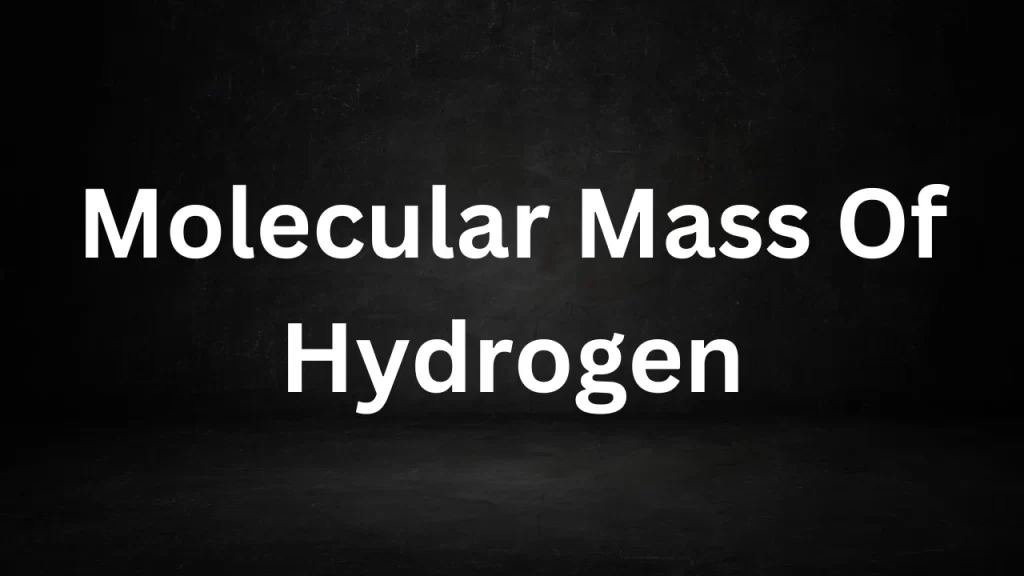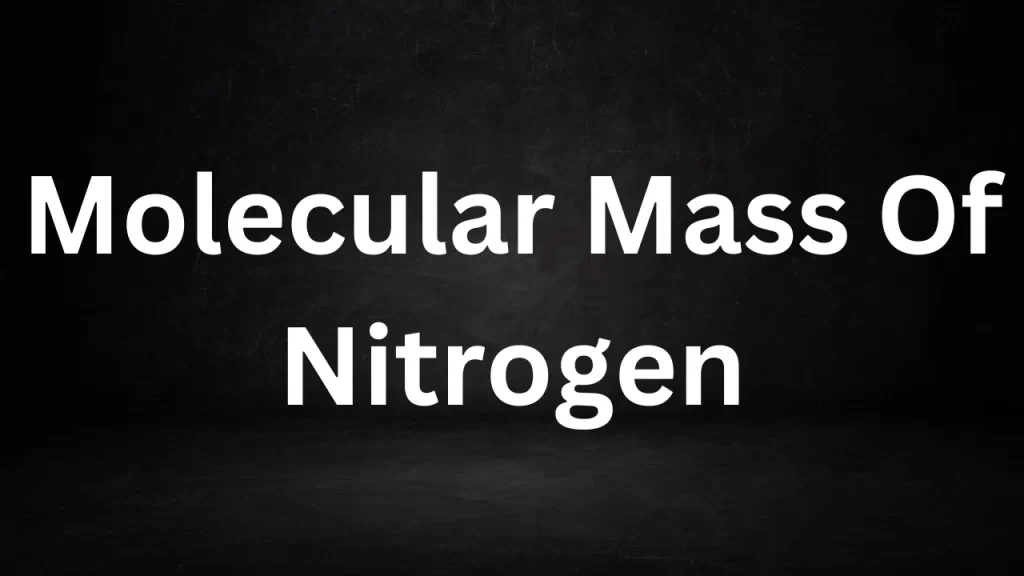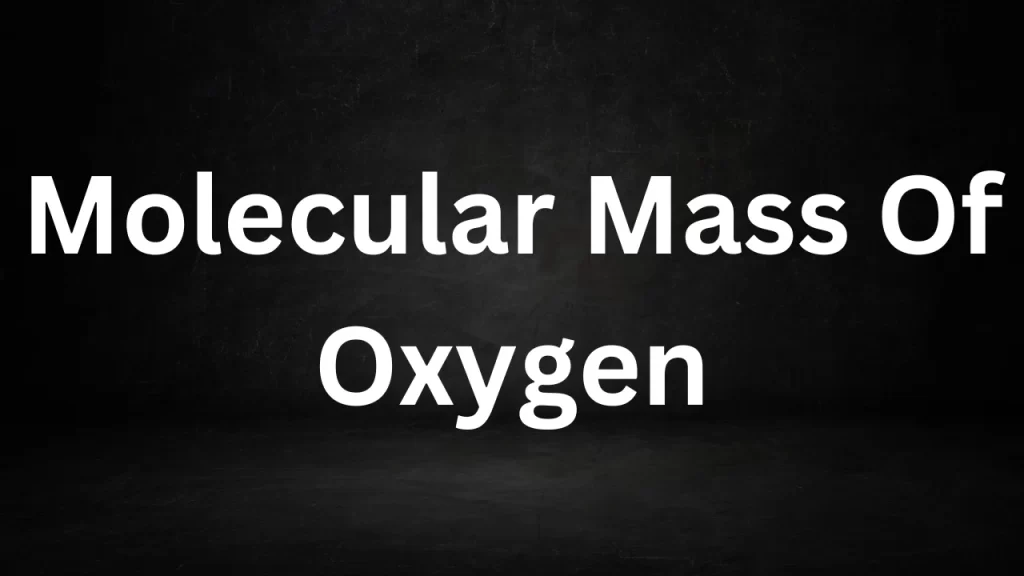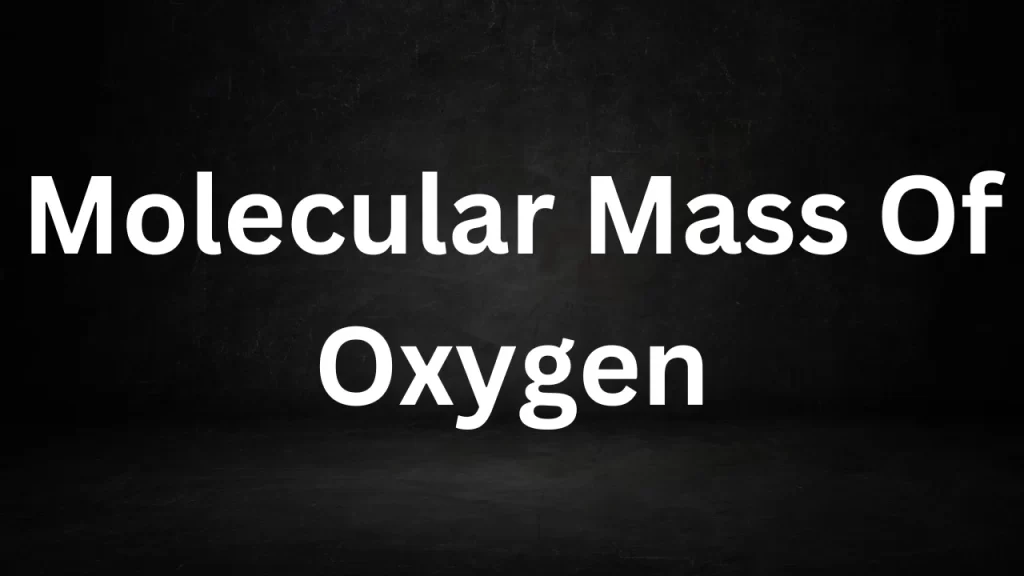Blog
Photosynthesis In Higher Plants
Photosynthesis In Higher Plants: Photosynthesis is a complex and vital process that sustains life on Earth by converting sunlight into energy-rich molecules.
In higher plants, this phenomenon is a cornerstone of their biology, enabling them to synthesize their own food and release oxygen into the atmosphere.
In this article, we will explore the remarkable journey of photosynthesis in higher plants, from its fundamental principles to its ecological significance.

Photosynthesis In Higher Plants
The Photosynthesis Equation
The chemical equation that represents photosynthesis is as follows:
6 CO2 + 6 H2O + light energy → C6H12O6 (glucose) + 6 O2
This equation illustrates that photosynthesis requires carbon dioxide and water in the presence of light energy to produce glucose and release oxygen as a byproduct.
Key Steps of Photosynthesis
Photosynthesis can be divided into two main stages:
1. Light-Dependent Reactions:
These reactions occur in the thylakoid membranes of chloroplasts and depend on the absorption of light by pigments, primarily chlorophyll. The key steps include:
Light Absorption: Chlorophyll molecules absorb sunlight and convert it into chemical energy.
- Water Splitting: Water molecules are split (photolysis), releasing oxygen, protons (H+ ions), and electrons.
- ATP and NADPH Formation: The energy from sunlight is used to generate ATP (adenosine triphosphate) and NADPH (nicotinamide adenine dinucleotide phosphate), which are energy-rich molecules.
2. Light-Independent Reactions (Calvin Cycle):
The Calvin Cycle, which occurs in the stroma of chloroplasts, is the second stage of photosynthesis. It utilizes the ATP and NADPH generated in the light-dependent reactions to fix carbon dioxide and synthesize glucose. The key steps include:
- Carbon Fixation: Carbon dioxide from the atmosphere is captured and converted into a three-carbon compound called 3-phosphoglycerate (3-PGA).
- Reduction: ATP and NADPH provide energy and electrons to convert 3-PGA into glyceraldehyde-3-phosphate (G3P), a sugar molecule.
- Regeneration of RuBP: Some G3P molecules are used to regenerate ribulose-1,5-bisphosphate (RuBP), a critical molecule in the Calvin Cycle.
- Glucose Synthesis: G3P molecules are further processed to form glucose and other organic molecules.
Significance of Photosynthesis in Higher Plants
- Food Production: Photosynthesis is the foundation of the food chain. Higher plants produce glucose and other organic compounds, which serve as primary sources of energy and nutrients for animals and humans.
- Oxygen Release: Photosynthesis generates oxygen as a byproduct, essential for respiration in all living organisms, including humans.
- Carbon Dioxide Absorption: Plants absorb carbon dioxide during photosynthesis, helping to mitigate the greenhouse effect and reduce global warming.
- Energy Storage: Glucose produced during photosynthesis is used by plants for energy and growth and can also be stored as starch for future use.
- Ecological Impact: Photosynthesis shapes ecosystems, providing resources for herbivores and carnivores alike, and influencing the diversity and distribution of life on Earth.
- Human Agriculture: Understanding photosynthesis has enabled humans to optimize crop production and develop agricultural practices to feed the growing global population.
- Scientific Research: Photosynthesis continues to be a subject of intense scientific study, with ongoing research aimed at improving crop yields, harnessing renewable energy, and understanding fundamental biological processes.
Photosynthesis in higher plants is a remarkable and intricate process that fuels life on our planet. It serves as a testament to the intricate balance of nature, where the simple act of capturing sunlight sustains the complexity of the Earth’s ecosystems and all living organisms within them.
Read More
- Motion In A Plane
- Basic Properties Electrical Charge
- Anatomy Of Flowering Plants
- Elastic Behaviour Of Materials
- Molecular Weight Of Oxalic Acid
Frequently Asked Questions (FAQs) Photosynthesis In Higher Plants
1. What is Photosynthesis?
Photosynthesis is the process by which green plants, algae, and certain bacteria convert sunlight, carbon dioxide (CO2), and water (H2O) into glucose (a form of sugar) and oxygen (O2). This energy-conversion process takes place in specialized cellular structures called chloroplasts, mainly in the green parts of plants, such as leaves.
2. Where does photosynthesis primarily take place in higher plants?
Photosynthesis mainly occurs in the chloroplasts of plant cells, particularly in the green parts of the plant, such as leaves.
3. What is the significance of photosynthesis?
Photosynthesis is essential for life on Earth. It provides food for plants and serves as the foundation of the food chain, releasing oxygen into the atmosphere and absorbing carbon dioxide. It also supports ecosystems and human agriculture.
4. What is the chemical equation for photosynthesis in higher plants?
The chemical equation for photosynthesis is: 6 CO2 + 6 H2O + light energy → C6H12O6 (glucose) + 6 O2. This equation represents the conversion of carbon dioxide and water into glucose and oxygen using light energy.
5. What are the two main stages of photosynthesis?
Photosynthesis consists of two main stages: the light-dependent reactions, which occur in the thylakoid membranes of chloroplasts, and the light-independent reactions (Calvin Cycle), which take place in the stroma of chloroplasts.
Molecular Weight Of Urea
Molecular Weight Of Urea: The molecular weight of urea (NH₂)₂CO can be calculated by summing the atomic weights of its constituent elements. Here are the atomic weights of the elements in urea:

Molecular Weight Of Urea
Molecular Weight: A Fundamental Concept
Molecular weight is the mass of a molecule expressed in atomic mass units (u) or unified atomic mass units (AMU). It is defined as the sum of the atomic masses of all the atoms in a molecule. Molecular weight is a vital parameter in chemistry because it helps us determine the quantity of a substance, calculate reaction stoichiometry, and understand the physical and chemical properties of compounds.
The Composition of Urea
Urea, with the chemical formula (NH₂)₂CO, is an organic compound found in many living organisms and is also synthetically produced for various purposes. Let’s break down the atomic composition of urea:
- Nitrogen (N): Atomic weight ≈ 14.00674 u.
- Hydrogen (H): Atomic weight ≈ 1.00784 u.
- Carbon (C): Atomic weight ≈ 12.0096 u.
- Oxygen (O): Atomic weight ≈ 15.999 u.
Calculating the Molecular Weight of Urea
To calculate the molecular weight of urea, we sum the atomic weights of all its constituent elements:
Molecular Weight of Urea = (2 × Atomic Weight of N) + (4 × Atomic Weight of H) + Atomic Weight of C + (2 × Atomic Weight of O)
Molecular Weight of Urea ≈ (2 × 14.00674 u) + (4 × 1.00784 u) + 12.0096 u + (2 × 15.999 u)
Molecular Weight of Urea ≈ 28.01348 u + 4.03136 u + 12.0096 u + 31.9998 u
Molecular Weight of Urea ≈ 76.05224 u
Rounded to four decimal places, the molecular weight of urea is approximately 76.0522 atomic mass units (u).
Significance of Urea’s Molecular Weight
Understanding the molecular weight of urea holds significance in various fields and applications:
- Agriculture: Urea is a common nitrogen-rich fertilizer used in agriculture. Its molecular weight is crucial for determining the quantity of nitrogen applied to crops, influencing their growth and yield.
- Chemical Reactions: In chemical reactions involving urea, its molecular weight is vital for stoichiometry calculations, allowing chemists to determine the amounts of H2NCONH2 required or produced.
- Biochemistry: Urea plays a role in biochemical processes, such as the urea cycle, which eliminates excess nitrogen from the body. Molecular weight is essential in metabolic studies and medical diagnostics.
- Industrial Applications: Urea has industrial applications, including its use in plastics, adhesives, and textiles. Its molecular weight is relevant in quality control and manufacturing processes.
- Medicine: Urea is used in medical tests, like the urea breath test, for diagnosing certain conditions. Understanding its molecular weight is vital for accurate diagnostic procedures.
Conclusion
The molecular weight of H2NCONH2, approximately 76.0522 atomic mass units (u), is a fundamental property of this versatile organic compound. Whether in agriculture, chemistry, biochemistry, industry, or healthcare, knowledge of urea’s molecular weight enhances our understanding of its applications and importance in different aspects of our lives. It serves as a reminder of the critical role molecular weight plays in chemistry and its practical implications in diverse fields.
Read More
- Molecular Mass Of Urea
- Molecular Mass Of Hydrogen
- Molecular Mass Of Nacl
- Molecular Mass Of Naoh
- Molecular Mass Of Nitrogen
Frequently Asked Question (FAQs) Molecular Weight Of H2NCONH2
1. What is the molecular weight of H2NCONH2?
The molecular weight of urea (NH₂)₂CO is approximately 76.0522 atomic mass units (u). This value is calculated by summing the atomic weights of the constituent elements in the molecule: nitrogen (N), hydrogen (H), carbon (C), and oxygen (O).
2. Why is the molecular weight of H2NCONH2 important in chemistry?
The molecular weight of H2NCONH2 is a fundamental property that helps chemists determine the quantity of H2NCONH2 in reactions, calculate stoichiometry, and understand its behavior in various chemical processes.
3. How is the molecular weight of H2NCONH2 calculated?
The molecular weight of H2NCONH2 is calculated by adding the atomic weights of its constituent elements. This includes two nitrogen atoms (N), four hydrogen atoms (H), one carbon atom (C), and two oxygen atoms (O).
4. What is the significance of urea’s molecular weight in agriculture?
Urea is a common nitrogen-rich fertilizer used in agriculture. Its molecular weight is crucial for calculating the amount of nitrogen applied to crops, which directly affects their growth and yield.
5. Are there any biochemical implications of urea’s molecular weight?
Urea plays a role in biochemical processes, such as the urea cycle, which helps eliminate excess nitrogen from the body. Understanding urea’s molecular weight is important for metabolic studies and medical diagnostics.
Motion In A Plane
Motion In A Plane: Motion in a plane, also known as two-dimensional motion, is a fundamental concept in physics that describes the movement of objects in two perpendicular directions simultaneously.
This type of motion occurs in many real-world scenarios, from the flight of birds to the trajectory of a soccer ball. In this article, we will explore the key principles and equations governing motion in a plane.

Motion In A Plane
Two Dimensions of Motion
When an object moves in a plane, it experiences motion in two perpendicular directions, typically referred to as the x-direction (horizontal) and the y-direction (vertical). To describe such motion, we use a coordinate system with axes representing these directions. This system allows us to specify the position, velocity, and acceleration of an object at any given time.
Key Concepts in 2D Motion
Position Vector:
In two-dimensional motion, the position of an object at any time is described by a position vector, often denoted as r. This vector has components x and y, which represent the horizontal and vertical displacements from a chosen reference point, respectively.
Displacement:
The displacement of an object is a vector that describes the change in its position from one point to another. In 2D motion, displacement can be calculated as the difference between the final and initial position vectors: Δr = r_final – r_initial.
Velocity:
Velocity is the rate of change of displacement and is also a vector. It can be separated into two components: vx and vy, corresponding to the rates of change in the x-direction and y-direction, respectively. The magnitude of velocity, denoted as |v|, is given by the square root of the sum of the squares of vx and vy.
Acceleration:
Acceleration is the rate of change of velocity and is likewise a vector. It can be divided into ax and ay, representing the acceleration in the x-direction and y-direction, respectively. The magnitude of acceleration, denoted as |a|, is determined similarly to velocity.
Equations of 2D Motion
Several equations describe the motion of objects in a plane:
- Position Equation: r = r_initial + Δr.
- This equation calculates the final position vector (r) based on the initial position vector (r_initial) and the displacement vector (Δr).
- Velocity Equation: v = v_initial + at.
- In two dimensions, this equation must be applied separately to the x-direction and y-direction, giving vx = vx_initial + axt and vy = vy_initial + ayt.
- Displacement Equation: Δr = v_initialt + 0.5at².
- Like the velocity equation, this equation should be used separately for both x and y components.
- Acceleration Equation: v² = v_initial² + 2aΔr.
- Once again, this equation is applied independently to the x-direction and y-direction.
Projectile Motion
One common example of motion in a plane is projectile motion, where an object is launched into the air and moves under the influence of gravity. During projectile motion, the object follows a curved path called a trajectory, and its motion can be analyzed using the principles and equations mentioned above.
Understanding motion in a plane is essential in physics and engineering, enabling the prediction and control of objects’ movements in a wide range of applications, from sports to transportation and space exploration. It provides a valuable framework for modeling and analyzing complex real-world scenarios involving two-dimensional motion.
Read More
- Basic Properties Electrical Charge
- Anatomy Of Flowering Plants
- Elastic Behaviour Of Materials
- Molecular Weight Of Oxalic Acid
- Structural Organisation In Animals
Frequently Asked Question (FAQs) Motion In A Plane
1. What is motion in a plane?
Motion in a plane, also known as two-dimensional motion, refers to the movement of objects in two perpendicular directions simultaneously, typically the horizontal (x-direction) and vertical (y-direction) axes.
2. How is motion in a plane different from one-dimensional motion?
In one-dimensional motion, objects move along a single axis (e.g., left to right or up and down). In motion in a plane, objects move in two perpendicular directions simultaneously, requiring the use of a coordinate system to describe their motion.
3. What is a position vector in two-dimensional motion?
A position vector, denoted as r, describes the position of an object in a plane. It consists of two components, x and y, representing the horizontal and vertical displacements from a reference point.
4. How is displacement calculated in two-dimensional motion?
Displacement in two-dimensional motion is calculated as the difference between the final and initial position vectors: Δr = r_final – r_initial.
5. What are the components of velocity in two-dimensional motion?
Velocity in two-dimensional motion has two components: vx (horizontal) and vy (vertical), representing the rates of change in the x-direction and y-direction, respectively.
Molecular Mass Of Urea
Molecular Mass Of Urea: Urea, a simple but essential organic compound, holds a prominent place in the fields of biology, chemistry, and agriculture.
Understanding the molecular mass of urea is fundamental to grasp its role in various applications, from fertilizers to biochemical processes. In this article, we will delve into the molecular mass of urea and explore its significance.

Molecular Mass Of Urea
The Basics of Molecular Mass
Molecular mass, also known as molecular weight or molar mass, is a key concept in chemistry. It represents the mass of a molecule and is typically expressed in atomic mass units (u) or unified atomic mass units (AMU). Molecular mass is calculated by summing the atomic masses of all the atoms in a molecule.
Urea: A Common Organic Compound
Urea, with the chemical formula (NH₂)₂CO, is a naturally occurring organic compound. It is a byproduct of protein metabolism in animals and is also synthetically produced for various purposes, including as a nitrogen-rich fertilizer.
Atomic Mass of Urea
To calculate the molecular mass of urea, we need to consider the individual atomic masses of the constituent elements:
- The atomic mass of nitrogen (N) is approximately 14.00674 atomic mass units (u).
- The atomic mass of hydrogen (H) is approximately 1.00784 u.
- The atomic mass of carbon (C) is approximately 12.0096 u.
- The atomic mass of oxygen (O) is approximately 15.999 u.
Calculating the Molecular Mass of Urea
Now, let’s calculate the molecular mass of H2NCONH2 by summing the atomic masses of its constituent elements:
Molecular Mass of H2NCONH2 = (2 x Atomic Mass of N) + (4 x Atomic Mass of H) + Atomic Mass of C + (2 x Atomic Mass of O)
Molecular Mass of Urea ≈ (2 x 14.00674 u) + (4 x 1.00784 u) + 12.0096 u + (2 x 15.999 u)
Molecular Mass of Urea ≈ 28.01348 u + 4.03136 u + 12.0096 u + 31.998 u
Molecular Mass of Urea ≈ 76.05244 u
Rounded to four decimal places, the molecular mass of urea is approximately 76.0524 atomic mass units (u).
Significance of Urea’s Molecular Mass
Understanding the molecular mass of urea is crucial in various scientific and practical contexts:
- Agriculture: Urea is a widely used nitrogen fertilizer in agriculture. Its molecular mass is important for determining the amount of nitrogen supplied to plants for optimal growth and crop yield.
- Biochemistry: Urea plays a significant role in biochemical processes, such as the urea cycle, which is responsible for the elimination of excess nitrogen from the human body. Knowledge of urea’s molecular mass is essential in these processes.
- Chemical Reactions: In laboratory settings, urea is used in chemical reactions and as a denaturant in protein studies. Its molecular mass is a key factor in reaction stoichiometry and experimental design.
- Industrial Applications: Urea has applications in various industries, including textiles, adhesives, and plastics. Its molecular mass is important in quality control and manufacturing processes.
- Medicine: Urea is used in some medical tests, such as the urea breath test for diagnosing Helicobacter pylori infections. Understanding urea’s molecular mass is essential for accurate diagnostic procedures.
Conclusion
The molecular mass of urea, approximately 76.0524 atomic mass units (u), is a fundamental property of this versatile organic compound.
Its significance spans agriculture, biochemistry, industry, and healthcare. Whether you’re a farmer, chemist, biologist, or researcher, an awareness of urea’s molecular mass enhances your understanding of its applications and importance in various aspects of our world.
Read More
- Molecular Mass Of Hydrogen
- Molecular Mass Of Nacl
- Molecular Mass Of Naoh
- Molecular Mass Of Nitrogen
- Molecular Weight Of Glucose
Frequently Asked Questions (FAQs) Molecular Mass Of H2NCONH2
1. What is the molecular mass of urea?
The molecular mass of urea (NH₂)₂CO is approximately 76.0524 atomic mass units (u). This value is obtained by summing the atomic masses of the constituent elements in the molecule: nitrogen (N), hydrogen (H), carbon (C), and oxygen (O).
2. Why is it important to know the molecular mass of H2NCONH2?
Understanding the molecular mass of H2NCONH2 is crucial in various scientific, agricultural, and industrial applications. It helps in fertilizer formulation, biochemical studies, chemical reactions, and medical diagnostics.
3. How is the molecular mass of H2NCONH2 calculated?
The molecular mass of H2NCONH2 is calculated by adding the atomic masses of its constituent elements. This includes two nitrogen atoms (N), four hydrogen atoms (H), one carbon atom (C), and two oxygen atoms (O).
4. What is the significance of urea’s molecular mass in agriculture?
Urea is a commonly used nitrogen fertilizer in agriculture. Its molecular mass is essential for determining the amount of nitrogen supplied to plants, which affects their growth and crop yield.
5. How is urea used in biochemical processes?
Urea is involved in biochemical processes such as the urea cycle, which helps eliminate excess nitrogen from the human body. Understanding its molecular mass is important for metabolic studies and medical diagnostics.
Molecular Mass Of Hydrogen
Molecular Mass Of Hydrogen: H2, the lightest and most abundant element in the universe, plays a fundamental role in chemistry, physics, and astrophysics.
One key aspect of H2 is its molecular mass, a concept that underpins our understanding of chemical reactions, gas properties, and the composition of matter. In this article, we will explore the molecular mass of H2 and its significance.

Molecular Mass Of Hydrogen
The Basics of Molecular Mass
Molecular mass, also known as molecular weight or molar mass, is a crucial concept in chemistry. It represents the mass of a molecule and is typically expressed in atomic mass units (u) or unified atomic mass units (AMU). Molecular mass is calculated by summing the atomic masses of all the atoms in a molecule.
Hydrogen: The Simplest Element
H2 is the simplest and lightest element in the periodic table. It has an atomic number of 1, indicating that it has one proton in its nucleus. The most common and stable form of hydrogen is the diatomic molecule H2, where two hydrogen atoms are chemically bonded together.
Atomic Mass of Hydrogen
The atomic mass of H2 is approximately 1.00784 atomic mass units (u). This value accounts for the most common isotope of hydrogen, known as protium (¹H), which consists of one proton and one electron.
Calculating the Molecular Mass of Hydrogen (H2)
To calculate the molecular mass of hydrogen (H2), we simply add the atomic masses of the two hydrogen atoms in the molecule:
Molecular Mass of Hydrogen (H2) = (Atomic Mass of H2) x 2 Molecular Mass of Hydrogen (H2) ≈ (1.00784 u) x 2 ≈ 2.01588 u
Rounded to four decimal places, the molecular mass of hydrogen (H2) is approximately 2.0159 atomic mass units (u).
Significance of Hydrogen’s Molecular Mass
Understanding the molecular mass of H2 is of paramount importance in various scientific and practical contexts:
- Chemical Reactions: In chemical reactions involving hydrogen, its molecular mass is crucial for stoichiometry calculations. It helps determine the amount of H2 required or produced in a reaction.
- Gas Properties: H2 is used as a fuel and in gas mixtures for various applications. Its molecular mass influences its behavior as a gas, including density, solubility, and combustion properties.
- Energy Storage: Hydrogen is considered a clean and efficient energy carrier. Its molecular mass affects the energy density of hydrogen fuels and their storage and transportation.
- Astrophysics: Understanding the molecular mass of H2 is vital in astrophysics, where H2 is the primary element in stars and the universe’s most abundant element.
- H2 Bonding: H2 bonds with other elements and molecules, and its molecular mass influences the strength and characteristics of these bonds.
- Fuel Cells: In H2 fuel cells, which are used for power generation and transportation, the molecular mass of H2 plays a role in efficiency calculations.
Conclusion
The molecular mass of hydrogen (H2), approximately 2.0159 atomic mass units (u), is a fundamental property of this elemental gas. Its significance extends from the microscopic world of chemical reactions to the vast reaches of the universe in astrophysics. Whether it’s powering vehicles, fueling stars, or driving chemical reactions in the laboratory, the molecular mass of H2 is a foundational concept that enriches our understanding of the physical and chemical properties of matter.
Read More
- Molecular Mass Of Nacl
- Molecular Mass Of Naoh
- Molecular Mass Of Nitrogen
- Molecular Weight Of Glucose
- Molecular Mass Of Oxygen
Frequently Asked Question (FAQs) Molecular Mass Of H2
1. What is the molecular mass of hydrogen (H2)?
The molecular mass of hydrogen (H2) is approximately 2.0159 atomic mass units (u). This value is calculated by adding the atomic masses of the two H2 atoms in the molecule.
2. Why is the molecular mass of H2 significant?
The molecular mass of H2 is essential in various scientific fields, including chemistry, physics, and astrophysics. It influences chemical reactions, gas properties, energy storage, and our understanding of the universe.
3. How is the molecular mass of H2 calculated?
The molecular mass of hydrogen (H2) is calculated by multiplying the atomic mass of H2 by 2, as there are two H2 atoms in the H2 molecule. The atomic mass of H2 is approximately 1.00784 atomic mass units (u).
4. What are the implications of H2 molecular mass in chemical reactions?
Hydrogen’s molecular mass is crucial in stoichiometry calculations, helping determine the quantities of H2 involved in chemical reactions. It plays a fundamental role in chemical synthesis and analysis.
5. How does H2 molecular mass affect its behavior as a gas?
Hydrogen’s molecular mass influences its gas properties, including density, solubility, and combustion characteristics. It is used as a fuel in various applications due to its low molecular mass and high energy content.
Molecular Mass Of Nacl
Molecular Mass Of Nacl: Sodium chloride, commonly known as NaCl, is a ubiquitous chemical compound that holds a prominent place in both our culinary and scientific worlds.
Its molecular mass, often overlooked in daily life, plays a crucial role in various scientific, industrial, and health-related contexts. Let’s delve into the fundamentals of the molecular mass of NaCl and explore its significance.

Molecular Mass Of Nacl
Molecular Mass: The Foundation
Before we delve into the molecular mass of NaCl, it’s essential to understand what molecular mass means. Molecular mass, also known as molecular weight or molar mass, is the mass of a molecule, typically expressed in atomic mass units (u) or unified atomic mass units (AMU). It represents the sum of the atomic masses of all the atoms in a molecule.
Composition of NaCl (Sodium Chloride)
NaCl, or sodium chloride, is a simple ionic compound composed of two elements:
- Sodium (Na) with an atomic mass of approximately 22.98977 u.
- Chlorine (Cl) with an atomic mass of approximately 35.453 u.
Calculating the Molecular Mass of NaCl
To find the molecular mass of sodium chloride, we add the atomic masses of its constituent elements:
Molecular Mass of sodium chloride = (Atomic Mass of Na) + (Atomic Mass of Cl) Molecular Mass of sodium chloride ≈ 22.98977 u + 35.453 u ≈ 58.44277 u
Rounded to four decimal places, the molecular mass of NaCl is approximately 58.4428 atomic mass units (u).
Significance of NaCl’s Molecular Mass
Understanding the molecular mass of sodium chloride is of paramount importance in various fields and applications:
- Culinary and Food Science: In the culinary world, sodium chloride, or table salt, is a primary seasoning and preservative. Knowledge of its molecular mass is essential for accurately measuring and controlling salt content in recipes and food products.
- Chemical Reactions: In chemistry, sodium chloride is often used as a reagent or in the preparation of other chemicals. Its molecular mass is crucial for stoichiometry calculations in chemical reactions.
- Medicine and Health: Sodium chloride is used in intravenous (IV) fluids and saline solutions for medical purposes. Understanding its molecular mass is vital for dosage calculations and patient care.
- Manufacturing: In various industries, sodium chloride is utilized in processes such as water treatment, chemical manufacturing, and metallurgy. Precise measurements of its molecular mass are essential for quality control and process optimization.
- Geology and Earth Science: Sodium chloride is a common mineral found in salt deposits and in seawater. Its molecular mass is used in geological studies and the analysis of water composition.
- Environmental Science: The study of salt concentration in natural bodies of water and its impact on aquatic ecosystems relies on an understanding of the molecular mass of sodium chloride.
Conclusion
- The molecular mass of sodium chloride (sodium chloride), approximately 58.4428 atomic mass units (u), is a fundamental property of this everyday compound. While often taken for granted, sodium chloride’s molecular mass underpins its widespread use in food, chemistry, medicine, and various industrial applications. Whether you’re seasoning your meal or conducting scientific experiments, recognizing the importance of sodium chloride molecular mass enhances your understanding of its role in our world.
Read More
- Molecular Mass Of Naoh
- Molecular Mass Of Nitrogen
- Molecular Weight Of Glucose
- Molecular Mass Of Oxygen
- Difference Between Light Microscope And Electron Microscope
Frequently Asked Questions (FAQs) Molecular Mass Of Nacl
1. What is the molecular mass of NaCl (sodium chloride)?
The molecular mass of sodium chloride, also known as sodium chloride or table salt, is approximately 58.4428 atomic mass units (u). This value is obtained by adding the atomic masses of the constituent elements in the compound: sodium (Na) and chlorine (Cl).
2. Why is it important to know the molecular mass of NaCl?
Understanding the molecular mass of NaCl is crucial in various scientific, industrial, and everyday applications. It is used in chemical reactions, food preparation, medical treatments, and manufacturing processes.
3. How is the molecular mass of NaCl calculated?
The molecular mass of NaCl is calculated by adding the atomic masses of its constituent elements, sodium (Na) and chlorine (Cl). The atomic masses can be found in the periodic table, and their sum gives the molecular mass of sodium chloride.
4. Can the molecular mass of NaCl vary in different contexts?
No, the molecular mass of sodium chloride remains constant because it is a fixed chemical compound with a specific composition. It does not change in different contexts or environments.
5. What is the significance of NaCl’s molecular mass in the culinary world?
In cooking and food science, understanding the molecular mass of sodium chloride is essential for accurately measuring and controlling salt content in recipes. It influences flavor, texture, and preservation in various food products.
Molecular Mass Of Naoh
Molecular Mass Of Naoh: Sodium hydroxide, commonly known as NaOH, is a chemical compound with a significant presence in various industrial and household applications.
Understanding the molecular mass of NaOH is fundamental to comprehend its properties and applications in chemistry, manufacturing, and everyday life.

Molecular Mass Of Naoh
The Basics of Molecular Mass
Molecular mass, also referred to as molecular weight or molar mass, is a critical concept in chemistry. It represents the mass of a molecule and is expressed in atomic mass units (u) or unified atomic mass units (AMU). Molecular mass is calculated by summing the atomic masses of all the atoms present in a molecule.
Composition of NaOH (Sodium Hydroxide)
NaOH, or sodium hydroxide, consists of three elements: sodium (Na), oxygen (O), and hydrogen (H). To determine its molecular mass, we need to consider the individual atomic masses of these elements.
- The atomic mass of sodium (Na) is approximately 22.98977 u.
- The atomic mass of oxygen (O) is approximately 15.999 u.
- The atomic mass of hydrogen (H) is approximately 1.00784 u.
Calculating the Molecular Mass of NaOH
To find the molecular mass of sodium hydroxide, we simply add the atomic masses of its constituent elements:
Molecular Mass of sodium hydroxide = (Atomic Mass of Na) + (Atomic Mass of O) + (Atomic Mass of H) Molecular Mass of sodium hydroxide ≈ 22.98977 u + 15.999 u + 1.00784 u ≈ 39.99661 u
Rounded to four decimal places, the molecular mass of sodium hydroxide is approximately 39.9966 atomic mass units (u).
Significance of NaOH’s Molecular Mass
Understanding the molecular mass of sodium hydroxide has several practical implications:
- Chemical Reactions: In chemical reactions involving sodium hydroxide, its molecular mass is crucial for stoichiometry calculations. It helps determine the amount of NaOH required or produced in a chemical reaction.
- Manufacturing and Industry: sodium hydroxide is a versatile industrial chemical used in processes such as soap and detergent production, paper manufacturing, and water treatment. Knowing its molecular mass is vital for precise formulation.
- Laboratory Work: In laboratory settings, scientists and researchers use the molecular mass of NaOH to accurately prepare solutions and calculate concentrations.
- Environmental Considerations: NaOH plays a role in wastewater treatment and pH adjustment. Understanding its molecular mass aids in controlling and optimizing these processes.
- Household Use: In households, NaOH is commonly found in drain cleaners and oven cleaners. Knowledge of its molecular mass is not only important for product efficacy but also for safety precautions.
- Conclusion
- The molecular mass of NaOH (sodium hydroxide), approximately 39.9966 atomic mass units (u), is a fundamental property of this essential chemical compound. It underpins its applications in various industries, chemical processes, and everyday products. Whether you’re a chemist, an industrial engineer, or simply someone using household cleaning products, an awareness of NaOH’s molecular mass is indispensable for understanding its role in numerous aspects of our lives.
Read More
- Molecular Mass Of Nitrogen
- Molecular Weight Of Glucose
- Molecular Mass Of Oxygen
- Difference Between Light Microscope And Electron Microscope
- Molar Mass Of Aluminium
Frequently Asked Questions (FAQs) Molecular Mass Of Naoh
1. What is the molecular mass of NaOH (sodium hydroxide)?
The molecular mass of NaOH, also known as sodium hydroxide, is approximately 39.9966 atomic mass units (u). This value is obtained by summing the atomic masses of the constituent elements in the compound: sodium (Na), oxygen (O), and hydrogen (H).
2. Why is it important to know the molecular mass of NaOH?
Understanding the molecular mass of sodium hydroxide is essential in various scientific, industrial, and practical applications. It aids in determining reactant and product quantities in chemical reactions, formulating solutions, and controlling processes in industries like manufacturing and wastewater treatment.
3. How is the molecular mass of NaOH calculated?
The molecular mass of sodium hydroxide is calculated by adding the atomic masses of its constituent elements, namely sodium (Na), oxygen (O), and hydrogen (H). The atomic masses can be found in the periodic table, and their sum gives the molecular mass of NaOH.
4. What are the common uses of NaOH in everyday life and industry?
Sodium hydroxide is a versatile chemical compound used in various applications, including soap and detergent production, paper manufacturing, water treatment, and household cleaning products like drain cleaners and oven cleaners.
5. Is NaOH’s molecular mass relevant in chemical reactions?
Yes, NaOH’s molecular mass is crucial in chemical reactions where it serves as a reactant or product. It helps chemists determine the stoichiometry of reactions and calculate the amounts of substances involved.
Molecular Mass Of Nitrogen
Molecular Mass Of Nitrogen: When it comes to the elemental composition of our universe, nitrogen plays a vital role. It is one of the most abundant elements on Earth, making up approximately 78% of our atmosphere.
Nitrogen is a non-metal gas known for its importance in the sustenance of life and its presence in various compounds. One fundamental aspect of N2 is its molecular mass, which is crucial in various scientific and industrial applications.

Molecular Mass Of Nitrogen
The Basics of Molecular Mass
Molecular mass, also known as molecular weight or molar mass, is a fundamental concept in chemistry. It is defined as the mass of a molecule, which is the sum of the masses of all the atoms in that molecule.
The unit of molecular mass is the unified atomic mass unit (u), which is defined relative to the mass of a carbon-12 atom. The molecular mass of a compound is typically expressed in atomic mass units.
The Composition of Nitrogen Molecule
In the case of N2, the most common and stable form found in nature is the N2 molecule (N2). This molecule consists of two nitrogen atoms bonded together by a strong triple covalent bond. To determine the molecular mass of N2, we need to consider the individual masses of the nitrogen atoms that compose it.
Atomic Mass of Nitrogen
The atomic mass of an element is the weighted average of the masses of its naturally occurring isotopes. Nitrogen has two stable isotopes, nitrogen-14 (14N) and nitrogen-15 (15N), with natural abundances of approximately 99.63% and 0.37%, respectively.
The atomic mass of nitrogen-14 is approximately 14.00307 atomic mass units (u), and the atomic mass of nitrogen-15 is approximately 15.00011 u.
Calculating the Molecular Mass of Nitrogen (N2)
Now that we know the atomic masses of N2 isotopes, we can calculate the molecular mass of nitrogen (N2). Since there are two N2 atoms in an N2 molecule, we simply add the masses of these two atoms together:
Molecular Mass of N2 = (Atomic Mass of Nitrogen-14) x 2
Molecular Mass of N2 ≈ (14.00307 u) x 2 ≈ 28.00614 u
Rounded to four decimal places, the molecular mass of nitrogen (N2) is approximately 28.0061 atomic mass units (u).
Significance of Nitrogen’s Molecular Mass
Understanding the molecular mass of nitrogen is crucial in various scientific and industrial applications. For instance:
- Chemical Reactions: Chemists use molecular masses to balance chemical equations and determine reaction stoichiometry, which helps in predicting the amounts of reactants and products.
- Gas Properties: The molecular mass of N2 is important in understanding its physical properties, including its behavior as a gas in various conditions and its role in gas mixtures.
- Environmental Science: Researchers use the molecular mass of N2 to study N2 cycles and its impact on ecosystems, as well as its contribution to air pollution.
- Industrial Processes: In industries such as food processing and electronics manufacturing, the molecular mass of N2 is critical for controlling and optimizing production processes.
- Aviation and Space Exploration: Engineers and scientists consider the molecular mass of N2 in the design and operation of aircraft and spacecraft, as N2 is a significant component of the atmosphere.
- In conclusion, the molecular mass of nitrogen (N2), which is approximately 28.0061 atomic mass units (u), is a fundamental property of this essential element.
- It plays a pivotal role in various scientific and industrial fields, contributing to our understanding of chemistry, physics, and the natural world.
Read More
- Molecular Weight Of Glucose
- Molecular Mass Of Oxygen
- Difference Between Light Microscope And Electron Microscope
- Molar Mass Of Aluminium
- Molecular Mass Of Glucose
Frequently Asked Questions (FAQs) Molecular Mass Of Nitrogen
1. What is the molecular mass of nitrogen (N2)?
The molecular mass of nitrogen (N2) is approximately 28.0061 atomic mass units (u). This value is calculated by adding the atomic masses of the two N2 atoms that compose the N2 molecule.
2. Why is it important to know the molecular mass of nitrogen?
Knowing the molecular mass of N2 is essential in various scientific and industrial applications. It helps chemists balance chemical equations, understand gas properties, study environmental impacts, and optimize industrial processes.
3. How is the molecular mass of N2 calculated?
The molecular mass of nitrogen (N2) is calculated by adding the atomic masses of the two N2 atoms in the molecule. Since there are two nitrogen atoms, you simply multiply the atomic mass of nitrogen by 2.
4. What are the isotopes of N2, and how do they affect its molecular mass?
N2 has two stable isotopes: nitrogen-14 (14N) and N2-15 (15N). These isotopes have slightly different atomic masses. The molecular mass of N2 takes into account the weighted average of these isotopes based on their natural abundances, resulting in a molecular mass of approximately 28.0061 u.
5. How does nitrogen’s molecular mass impact its behavior as a gas?
The molecular mass of N2 influences its physical properties as a gas. It affects factors such as density, boiling point, and solubility. Nitrogen’s molecular mass plays a role in its behavior in various gas mixtures and its importance in industrial applications.
},{
“@type”: “Question”,
“name”: “4. What are the isotopes of nitrogen, and how do they affect its molecular mass?”,
“acceptedAnswer”: {
“@type”: “Answer”,
“text”: “Nitrogen has two stable isotopes: nitrogen-14 (14N) and nitrogen-15 (15N). These isotopes have slightly different atomic masses. The molecular mass of nitrogen takes into account the weighted average of these isotopes based on their natural abundances, resulting in a molecular mass of approximately 28.0061 u.”
}
},{
“@type”: “Question”,
“name”: “5. How does nitrogen’s molecular mass impact its behavior as a gas?”,
“acceptedAnswer”: {
“@type”: “Answer”,
“text”: “The molecular mass of nitrogen influences its physical properties as a gas. It affects factors such as density, boiling point, and solubility. Nitrogen’s molecular mass plays a role in its behavior in various gas mixtures and its importance in industrial applications.”
}
}]
}
Molecular Weight Of Glucose
Molecular Weight Of Glucose: The molecular weight of glucose (C6H12O6) can be calculated by adding together the atomic weights of all its constituent atoms. The atomic weights are usually given in atomic mass units (amu) or unified atomic mass units (u).

Molecular Weight Of Glucose
Here’s how to calculate the molecular weight of C6H12O6:
- Carbon (C) has an atomic weight of approximately 12.01 u.
- Hydrogen (H) has an atomic weight of approximately 1.01 u.
- Oxygen (O) has an atomic weight of approximately 16.00 u.
Now, let’s calculate the molecular weight:
Molecular Weight of C6H12O6 = (6 * Atomic Weight of Carbon) + (12 * Atomic Weight of Hydrogen) + (6 * Atomic Weight of Oxygen)
Molecular Weight of C6H12O6 = (6 * 12.01 u) + (12 * 1.01 u) + (6 * 16.00 u)
Molecular Weight of C6H12O6 = 72.06 u + 12.12 u + 96.00 u
Molecular Weight of C6H12O6 ≈ 180.18 u
So, the molecular weight of glucose (C6H12O6) is approximately 180.18 unified atomic mass units (u) or atomic mass units (amu).
This value is often used in chemistry for various calculations and is expressed in grams per mole (g/mol) in the International System of Units (SI). Therefore, the molar mass of C6H12O6 is approximately 180.18 g/mol.
Read More
- Molecular Mass Of Oxygen
- Difference Between Light Microscope And Electron Microscope
- Molar Mass Of Aluminium
- Molecular Mass Of Glucose
- Latent Heat Of Water
Frequently Asked Question (FAQs) Molecular Weight Of C6H12O6
1. What is the molecular weight of C6H12O6?
The molecular weight of glucose (C6H12O6) is approximately 180.18 unified atomic mass units (u) or atomic mass units (amu).
2. How is the molecular weight of C6H12O6 calculated?
The molecular weight of C6H12O6 is calculated by adding together the atomic weights of all its constituent atoms. Carbon (C) has an atomic weight of approximately 12.01 u, hydrogen (H) has an atomic weight of approximately 1.01 u, and oxygen (O) has an atomic weight of approximately 16.00 u.
3. Why is knowing the molecular weight of glucose important in chemistry and biology?
The molecular weight of C6H12O6 is crucial in various scientific and practical applications. It is used in chemistry for stoichiometry, reaction calculations, and molar concentration calculations. In biology, it’s important for understanding metabolic processes and cellular energy production.
4. Is the molecular weight of C6H12O6 the same as its molar mass?
Yes, the molecular weight of C6H12O6 is often referred to as its molar mass. Both terms represent the mass of one mole of glucose molecules (C6H12O6) and are expressed in grams per mole (g/mol).
5. How is the molecular weight of C6H12O6 used in analytical chemistry and laboratory work?
In analytical chemistry, the molecular weight of C6H12O6 is used to determine the concentration of C6H12O6 solutions. It’s also used to calculate the amount of glucose in chemical reactions or biological samples.
Molecular Mass Of Oxygen
Molecular Mass Of Oxygen: O2, often symbolized as O2, is the life-sustaining element that makes up a substantial portion of Earth’s atmosphere. Its importance in respiration, combustion, and various chemical processes is undeniable.
To fully grasp the significance of oxygen, it’s essential to understand its molecular mass, a fundamental property that reveals its weight and behavior in the natural world.

Molecular Mass Of Oxygen
Defining Molecular Mass
Molecular mass, also known as molecular weight or molar mass, is a measure of the total mass of a molecule. In the case of O2, this refers to the combined mass of the two O2 atoms that form a diatomic molecule. Molecular mass is typically expressed in atomic mass units (amu) or grams per mole (g/mol).
Calculating the Molecular Mass of Oxygen (O2)
To determine the molecular mass of O2, we must consider the atomic masses of the individual O2 atoms. The atomic mass of an element is defined relative to the mass of a carbon-12 atom, which is assigned a mass of exactly 12 atomic mass units (amu).
The atomic mass of O2 is approximately 15.9994 amu. Since O2 molecules consist of two O2 atoms, we can calculate the molecular mass of O2 as follows:
Molecular Mass of O2 = (Atomic Mass of O) * 2
Molecular Mass of O2 = (15.9994 amu) * 2
Molecular Mass of O2 ≈ 31.9988 amu
Hence, the molecular mass of O2 is approximately 31.9988 atomic mass units.
The Significance of Molecular Mass
Understanding the molecular mass of O2 is crucial in various scientific and practical applications:
1. Respiration:
- In the field of biology, the molecular mass of O2 is essential for calculating the amount of O2 consumed during respiration. This information is vital for understanding metabolic processes in organisms.
2. Stoichiometry:
- Chemists use molecular masses extensively in stoichiometry, where they calculate reactant and product masses in chemical reactions. This knowledge helps in determining reaction yields and balancing chemical equations.
3. Gas Laws:
- In the study of gases, such as in the ideal gas law, the molecular mass of O2 is a key parameter for predicting gas behavior under various conditions of temperature and pressure.
4. Environmental Science:
- Molecular mass plays a role in environmental studies, including air quality assessments. It helps in determining the composition of Earth’s atmosphere and monitoring changes due to pollution.
5. Industry and Technology:
- In industrial processes like combustion, the molecular mass of O2 is essential for optimizing fuel-air mixtures and ensuring efficient energy production.
Conclusion
The molecular mass of O2 is approximately 31.9988 atomic mass units, revealing its weight in chemical reactions, biological processes, and everyday applications.
This fundamental property allows scientists, engineers, and researchers to better understand and harness the power of O2, a vital element for life on Earth and an essential component in the world of chemistry and physics.
Read More
- Difference Between Light Microscope And Electron Microscope
- Molar Mass Of Aluminium
- Molecular Mass Of Glucose
- Latent Heat Of Water
- Difference Between Work And Power
Frequently Asked Question (FAQs) Molecular Mass Of Oxygen
1. What is the molecular mass of oxygen (O2)?
The molecular mass of oxygen (O2) is approximately 31.9988 atomic mass units (amu).
2. How is the molecular mass of oxygen calculated?
The molecular mass of oxygen (O2) is calculated by adding together the atomic masses of its constituent O2 atoms. Since O2 atoms have an atomic mass of approximately 15.9994 amu, the molecular mass of O2 is 2 times this value (2 * 15.9994 amu).
3. Why is knowing the molecular mass of oxygen important?
Understanding the molecular mass of O2 is essential in various scientific and practical applications. It is used in biology to calculate O2 consumption during respiration, in chemistry for stoichiometry and reaction balancing, and in environmental science for air quality assessments, among other uses.
4. Is the molecular mass of oxygen the same as its molar mass?
Yes, the molecular mass of O2is often referred to as its molar mass. Both terms refer to the mass of one mole of O2 molecules (O2), expressed in grams per mole (g/mol) or atomic mass units (amu).
5. How does the molecular mass of oxygen impact chemical reactions involving oxygen?
The molecular mass of O2 is crucial in chemical reactions where O2 is a reactant or product. It helps determine reactant and product masses, stoichiometry, and reaction yields.